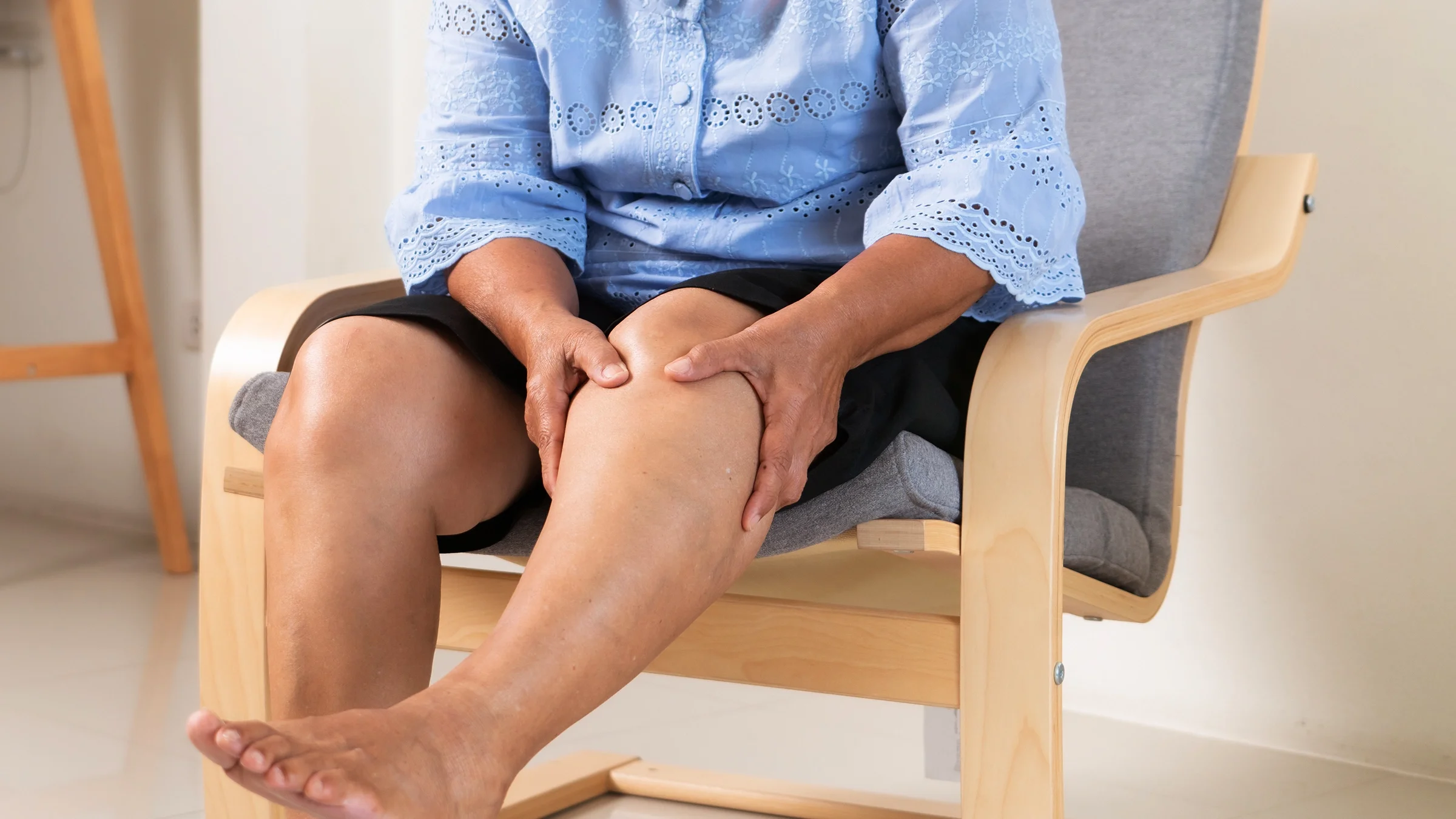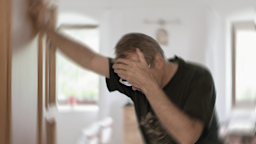Key takeaways:
Women have a higher chance of dying from strokes. The faster a stroke is treated, the better the recovery.
Common symptoms of strokes in both men and women include one-sided weakness, facial drooping, slurred speech, and sudden vision changes.
Signs of a stroke in women can sometimes be more vague, making them harder to diagnose. These signs include fainting, difficulty breathing, nausea, and confusion or disorientation.
Strokes happen when a part of your brain doesn’t get enough blood and oxygen. About one in five women will have a stroke every year. Compared to men, women have a higher chance of dying from them. But like heart attacks, recognizing the signs of a stroke in women may be a little harder. Their symptoms don’t always look like an obvious brain problem.
The most recent stroke guidelines have pointed out how strokes are different in women. We’ll go through what you need to know about the signs of strokes in women. When it comes to strokes, every minute counts. So, the sooner you get treated, the better your chance of survival and recovery.
Are the signs of stroke different in women?
The signs of stroke can be different in women. The symptoms can be more subtle and not obviously related to a stroke. This could be part of the reason why more women die after having a stroke. They’re more likely to get diagnosed with other conditions — like seizures or migraines — when they’re really having a stroke.
The time between when a stroke occurs to when medical intervention happens can be the difference between life and death. Educating yourself and your family about the signs of stroke, in both men and women, can help you act quickly to get the help you need.
Common signs of stroke
There are certain symptoms of a stroke that are common in both men and women. Before we review signs that are more unique to women, let’s first review the most common signs of a stroke so you can recognize them and call for help.
Sudden numbness or weakness in the face, arm, or leg
Strokes happen when a blood clot or bleeding prevents blood flow to certain parts of your brain. When blood isn’t reaching one part of your brain, the parts of your body controlled by that area are affected. This usually means someone experiences sudden numbness or weakness on one side of their body. This can be in the face, arm, and/or leg. This can look like:
Limpness in one arm or leg
Partial weakness in one arm or leg, which can look or feel more like clumsiness than weakness
An uneven smile
Difficulty speaking or eating because the facial muscles aren’t working properly
Confusion or trouble speaking
A stroke can affect your speech because of weakness in your face. But strokes can also affect the language center in your brain. When this happens, you may suddenly appear confused or have trouble speaking (also called “aphasia”). This can look like:
Difficulty recalling common words
“Word salad,” when someone strings together words that don’t make sense
Slurring or completely garbled speech
Complete inability to speak
Vision issues or dizziness
A stroke can affect your vision, usually in one eye. But it isn’t always easy to tell if the stroke is affecting one or both eyes. You might notice:
You can’t see something on one side of your peripheral vision
A blind spot in your vision
Double vision
Blurry vision
Signs of a mini stroke: If you have stroke symptoms that quickly go away, this doesn’t mean you’re in the clear. Small strokes are also a medical emergency.
Can stress cause a stroke? Long-term stress can increase your risk of having a stroke. Learn what this means so you can decrease your chances of it happening.
Signs of a heart attack in women: Like strokes, the symptoms of a heart attack in women can be more subtle and vague. Learn the signs to look for.
It’s also worth noting that vision issues are more commonly seen in males.
Trouble walking or loss of balance
Trouble walking, losing your balance, or even falling can be a sign of a stroke. This can happen for a number of different reasons, depending on which part of your brain is affected. It can happen with:
Weakness in your legs
Sensory changes (like numbness) in your legs
Changes in vision
A sense of vertigo or dizziness
Read more like this
Explore these related articles, suggested for readers like you.
Sudden severe headache with no known cause
Strokes can happen for a few different reasons. Most are caused by blood clots in your brain. But blood vessels can also burst, leading to sudden bleeding in your brain. When a stroke is caused by bleeding, it often leads to a headache.
When this happens, people often describe this as feeling very different from their prior headaches. It often feels much worse — or increases quickly — compared to prior headaches. It may also be accompanied by:
Nausea or vomiting
Confusion
Sleepiness
Any of the symptoms above
Stroke symptoms unique to women
There are some less typical symptoms of strokes that are more common in women. These symptoms are easy to misdiagnose because they can happen with multiple different types of conditions. They include:
Loss of consciousness: A rush of fatigue or sudden change in consciousness can lead to fainting or near-fainting.
Shortness of breath: Women over 55 years old are more likely to experience shortness of breath.
Nausea and/or vomiting: This is more common in women under the age of 45.
Sudden behavioral changes: Confusion can sometimes look simply like odd or uncharacteristic behavior or speech.
Vertigo: Vertigo is the sensation that the room is spinning. But it may also just feel like a new type of dizziness. It can also result in a loss of balance and coordination, making walking difficult.
Risk factors for stroke in women
A stroke can feel like it comes on out of nowhere. But there are some risk factors that make having a stroke more likely. It helps to know what increases your risk for stroke. First, because some of these factors can be changed — like smoking or excess weight. And second, so that you’re more likely to take the above symptoms seriously.
Some of these risk factors are true for both men and women, while others are more specific to women. The most common risk factors for stroke in both men and women include:
Older age, particularly over 65 years old
Family history of strokes
High blood pressure
High cholesterol, especially elevated triglycerides
Diabetes
Heart arrhythmia, especially atrial fibrillation
Smoking
Increased body weight
Some specific risk factors for women include:
Birth control pills and hormone replacement therapy
Migraines
Pregnancy complications, such as gestational hypertension, gestational diabetes, or premature birth
Endometriosis
Premature ovarian failure
What to do if you suspect a stroke
A stroke is a medical emergency. If you think you or someone near you is having a stroke, don’t wait. Call 911 or alert someone nearby for help.
The American Stroke Association uses an acronym called F.A.S.T. to help people know when to get help right away:
Face Droop: Look for a droopy smile or an asymmetric smile.
Arm Weakness: A quick way to test for this is to try and hold both arms up, as if you’re holding a tray. If one arm starts to drift down, this is a sign of a stroke.
Speech Disturbances: As described above, this can be slurred speech, confused sentences, or even word-finding difficulty.
Time to call 911: Call 911 as soon as possible.
When it comes to a stroke, every minute counts. The sooner you can get treatment, the better your chances of survival and recovery. Many times, these treatments can be started in the ambulance. So this isn’t the time to drive yourself or get a ride to the emergency room.
The bottom line
Strokes are a common medical emergency in both men and women, especially as people get older. But like heart attacks, the signs of a stroke in women may be harder to spot. And women have a higher chance of dying from a stroke. So, if you or someone you care about suddenly feels different, don’t wait to see if the feeling passes. Get help right away. If it’s a stroke, faster treatment makes a big difference for recovery.

Why trust our experts?


References
Ali, M., et al. (2021). Sex differences in presentation of stroke: A systematic review and meta-analysis. Stroke.
American Stroke Association. (n.d.). Stroke symptoms.
Bushnell, C., et al. (2024). 2024 guideline for the primary prevention of stroke: A guideline from the American Heart Association/American Stroke Association. Stroke.
Centers for Disease Control and Prevention. (2024). Signs and symptoms of stroke.
Kelly-Hayes, M. (2011). Influence of age and health behaviors on stroke risk: Lessons from longitudinal studies. Journal of the American Geriatrics Society.
National Institute on Aging. (2023). Stroke: Signs, causes, and treatment. National Institutes of Health.
National Heart, Lung, and Blood Institute. (2023). Stroke: Causes and risk factors. National Institutes of Health.
Nuvance Health. (2023). Difference between stroke symptoms in women vs. men.


















